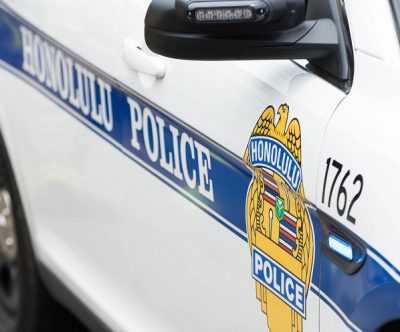ACLU of Hawaii statement on HPD killings
The American Civil Liberties Union of Hawai‘i today released the following statement regarding the killings of two unarmed people, Iremamber Sykap and Lindani Myeni, within the last two weeks by the Honolulu Police Department (HPD).
Iremamber Sykap should still be alive today. Lindani Myeni should still be alive today. The only reason they’re not is because–despite being unarmed–they were both killed by HPD officers. In each case, there are far more questions than answers. And both were from communities of color that have been consistently targeted by HPD.
Iremamber Sykap, a member of the local Micronesian community, was a 16-year old boy with a loving family who nicknamed him “Baby.” Police fired into the car he was driving multiple times, killing him. This despite the fact that recently revised HPD policies regarding use of force were supposed to restrain police from firing their guns into a car. And despite information that has been released by HPD in an apparent attempt to smear Iremamber Sykap’s memory, no weapons were found in the car, none of the other occupants of the car have been charged with any crimes, Chief Ballard was unable at a recent press conference to explain what justified the shooting in line with HPD policies, and we’ve been told it will be months before more information is forthcoming. This is not nearly good enough.
Lindani Myeni was a 29-year old husband and father of two whose wife described him as “gentle and loving.” A Black man originally from South Africa, the details of his killing by HPD also prompt more questions than answers. Body camera footage has only been released from two of the three officers on the scene, but even with that footage it is clear that the officers only announced themselves as police after they had shot Mr. Myeni four times. Rather than deescalate the situation, it appears that the HPD officers escalated matters by shining blinding flashlights at Mr. Myeni and yelling at him to get on the ground, without explaining why. And HPD’s comment that the video contains only the portions that are “relevant” and “contain the actual assault” is simply unacceptable–HPD does not get to choose for itself what is relevant after they kill someone.
From a legal perspective, it does not appear that the officers’ use of deadly force was justified under the circumstances of either killing, even based on what has been selectively revealed by HPD. And in the case of Mr. Myeni, the failure by police officers to announce themselves was dangerous, improper, and unlawful. These things must not be swept under the rug. And the fact that the HPD acting deputy chief “commended” the actions of his officers for the killing of an unarmed man in the case of the killing of Mr. Myeni is beyond the pale.
Iremamber Sykap was Micronesian. Lindani Myeni was Black. The aggressive approach that officers used against each raises questions about whether and how racial bias, explicit or implicit, played a role in the officers’ quick escalation to the use of deadly force. We know that there are clear disparities–based on race–in how HPD behaves. Considering documented differences in arrests and the use of force by HPD against communities of color, Chief Ballard was simply wrong when she said this “had nothing to do with race,” when asked about Mr. Myeni’s killing by HPD.
According to reporting by Civil Beat, HPD’s own data shows racial disparities in local police use of force. For the past 10 years, Hawaii’s Black community consistently was the subject of about 7% of HPD use-of-force incidents annually, even though they make up just 2.2% of the state population. Native Hawaiians and other Pacific Islanders were the subject of 33% of HPD use-of-force incidents in 2018, even though they make up about 10% of the state. And HPD’s arrest data further shows that, during the COVID-19 pandemic, HPD was 30 times more likely to arrest a Micronesian person and five times more likely to arrest a Black or Samoan person for violations of the COVID-19 orders than to arrest a white person. This is about race and the targeting of communities of color by local police.
Sadly, the killings of Iremamber Sykap and Lindani Myeni are only the latest in a string of killings over the last ten years by HPD. They were preceded by the killings of Reno Velleses in 2010, Michael Kahana Davis in 2011, Mark Ahnee in 2011, Herbden Gabriel in 2011, Aaron Torres in 2012, Gregory Gordon in 2013, Stephen Dinnan in 2013, Victor Rivera in 2013, Richard Nelson in 2014, James Pickard, Jr. in 2014, Sheldon Haleck in 2015, Walden Dang in 2016, Dwain Lasit in 2016, Cameron Johnson in 2017, Pekelo Sanchez in 2017, Renie Cablay in 2018, Steven Allan Kaluahinui Hyer, Jr. in 2018, Gavalynn Mahuka in 2018, Freddie Whitmore in 2018, Michael Perez in 2018, Tison Dinney in 2018, Sherrianne Leinaala Nixon in 2019, Siatuu Tauai, Jr. in 2019, Kyle Thomas in 2019, Danny Colton in 2019, Peter Purcell in 2019, Michael Kahalehoe in 2019, Dustin Spencer in 2019, and Dana Brown in 2019. In multiple cases the people who were killed were completely unarmed, not armed with guns, or suffering a mental health crisis. In multiple cases officers fired into moving cars. In multiple cases, significant monetary settlements were paid to the families of the people who were killed. And in multiple cases, details of their killings have still not been revealed.
Here are some of the things that must happen now:
- HPD must release the name of the police officers who killed Iremamber Sykap, Lindani Myeni, and all victims of local police violence. We must have transparency and accountability.
- The Law Enforcement Officer Independent Review Board should immediately begin investigations into the killings of Iremamber Sykap, Lindani Myeni, and all of the other people who have been killed by HPD but whose killings have not yet been independently investigated. The police cannot be left to police themselves.
- We must divest from police and invest in communities. More policing is not keeping us safer. We don’t need more proof of that. We must divert funding from police into social programs based in the community that actually prevent crime and address harm.
- We must continue to put pressure on the Police Commission to hold HPD accountable and make sure they are asking the right questions of candidates for the next Police Chief to make sure HPD doesn’t continue business as usual.
- We must continue to put pressure on Mayor Blangiardi to appoint someone to fill the existing vacancy on the Police Commission who won’t have conflicts of interest, who will increase transparent scrutiny of HPD, and who will accept that racial disparities in policing is an issue of utmost importance.
- For anyone who witnesses police misconduct, but doesn’t know what to do about it, review materials from the ACLU of Hawai‘i on how to report police misconduct in Hawai‘i.
- Call Mayor Blangiardi, Governor Ige, your county councilmember, your state representative, and your state senator, and let them know that we need a fundamental reimagining of policing in Hawai‘i. Make some noise and let them know our demands for change are only going to get louder. Start by demanding the passage of the only police reform bill still alive at the legislature this year, Breonna’s Law, SB 726, which expressly prohibits the use of “no-knock” warrants, requires officers to wait at least thirty seconds prior to entering a property when executing a warrant, and requires officers to serve warrants in uniform. Breonna’s Law is named in honor of Breonna Taylor, a 26-year-old Black medical worker, who on March 14, 2020 was murdered in her home in Louisville, Kentucky, during a botched, no-knock raid by Louisville Metro Police wearing plainclothes.




